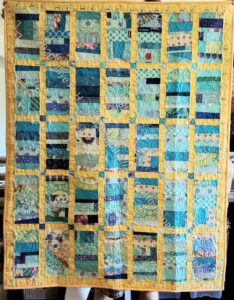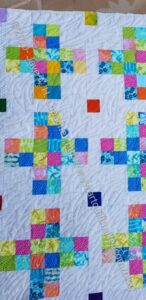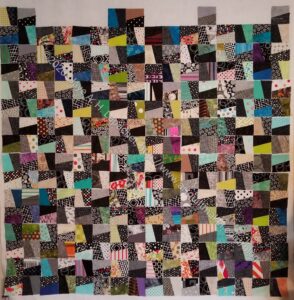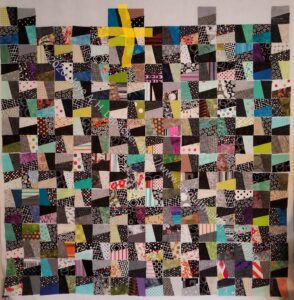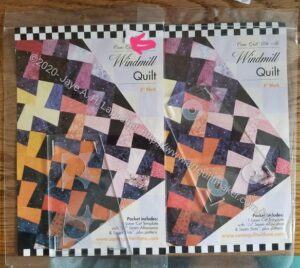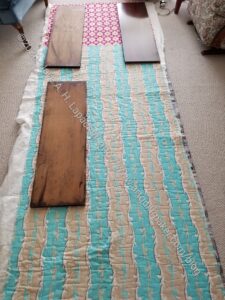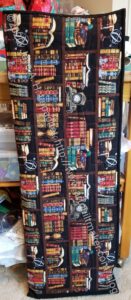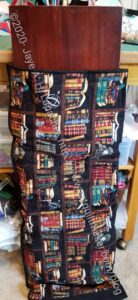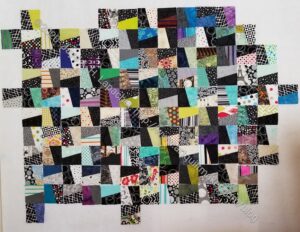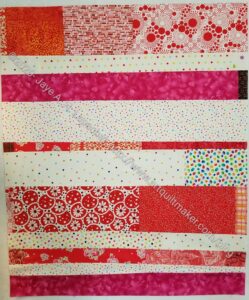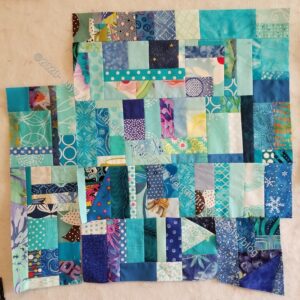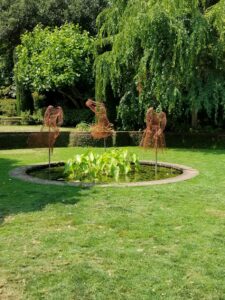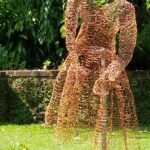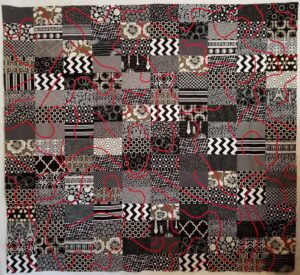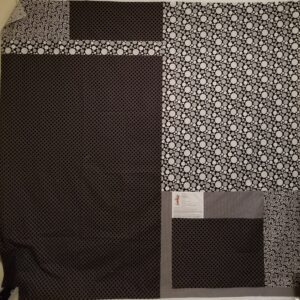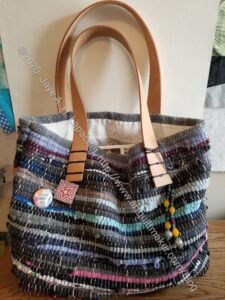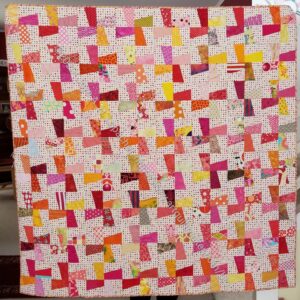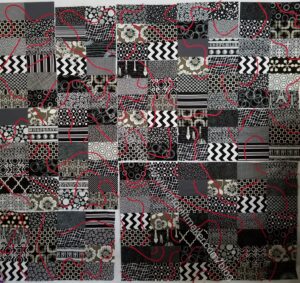 Kitchen Stitches: Sewing Projects to Spice Up Your Home by That Patchwork Place
Kitchen Stitches: Sewing Projects to Spice Up Your Home by That Patchwork Place
I borrowed the book from the library right before shelter-in-place started. It has been in my ‘pedicure bag’ since March. I read halfway through it and then didn’t get back to it until the other day. I usually write my reviews while getting a pedicure. Since I haven’t gotten one in months (#thankspandemic) the review has languished. I decided that it was time to finish reading the book and start writing the review.
I originally borrowed the book because of the bag on the front cover. I don’t remember where I saw the cover, but I loved the shape of the bag, so I sought out the book.
The book is essentially a project book. Aside from the introduction, the book is made up of patterns, not essays. There is little discussion of inspiration for the projects. The book is organized into three sections: ‘get cooking’, ‘set the table’ and ‘add a little spice’. The projects are all easy to find using the table of contents. Each project is by a different designer. Natalie Barnes (pg.17), Kim Niedzwiecki and Amy Ellis are familiar to me.
The introduction (pg.4) starts out with a huge assumption, “if you’re like many sewists and quilters, you like to cook almost as much as you like to play with fabric.” This is not true for me and quite off putting. For me, any time cooking takes away from sewing. I like good food, but only for nutrition. I am not much of a creative cook and definitely do not like complicated recipes unless they yield 12 meals. My YM says that he would know if I won the lottery because I would hire a cook. The intro would have started off, for me, in a less confrontational manner, if the focus has been on gift giving or enriching home decor.
The first project section, ‘Get Cooking’ (pg.5-44), starts off with an image of some of the projects included. I always like it when there are photos of the projects organized somewhere. The fabrics used are very appealing. ‘Get Cooking’ probably has the most projects. The first group of patterns includes the bag that drew me to the book, called the Baguette Tote (pg.12-15), as well as two other projects. All of the patterns are 3-ish pages. There are a lot of pictures to assist in making the projects.
The projects throughout the book are presented in groups of 2-3 and, occasionally, singly. The items in each group relate together somehow. I think the projects are useful and practical. I get the sense, however, that they are more for show than use. For example, Insul-Bright is a common item in the supply lists. There is no discussion of what it is or what temperatures it can handle. I would have like to have a section discussing techniques for sewing for the kitchen, dos and don’ts and things for which to watch out.
In addition to the Baguette Tote, this section includes patterns for a variety of potholders, such as a double-handed hot pads (pg.20-22), oven mitts (pg.27-31) single handed hot pads (pg.35-37), hot pan handle holders, (pg.37-38). There are also tea towels (pg.33-34), a slow cooker cozy (pg.23-26), which is customizable, and a couple of different aprons.
Many of the projects are customizable, so you can fit them to your casserole dish or slow cooker. Also, this makes it easy to make something for a gift you purchase.
The “Set the Table” section (pg.45-76) is all about decorating the table using fabric. I have made lots of fabric napkins and we use them every day. I am glad I have them because we can wash them instead of tossing. also, I have used fun fabrics and fabrics that coordinate with US holidays, such as Mardi Gras and Labor Day, in addition to Christmas and Thanksgiving. I find making napkins, especially the ironing, tedious and am glad I don’t have to make any more for awhile. Still, if you don’t have an abundance of napkins, this book provides excellent inspiration. We also use a tablecloth instead of place mats so I would re-purpose the table mat and place mats into a table cloth or even a table runner.
The Bistro tablecloth and napkin set (pg.61-66) has a clever design. I might re-purpose the motifs into a table runner for my buffet. The applique’ seems like a lot of work for something on which people will spill red wine. Still, I like the applique’ motifs.
This section also includes patterns for a tea cozy (pg.46-49) and several types of place mats. There are also a variety of techniques. I didn’t find the fabrics in this section particularly appealing. The projects, however, were small and would be good for learning specialized techniques such as reverse applique’, embroidery, foundation piecing, all detailed in this section.
The author is big on the Quilt-as-you-Go technique. It is a quick way to get a piece quilted, so can save time with certain designs. The Shattered Strips table runner and place mats set uses this technique. It is a good reminder of the method, which is also used for the Baguette Tote (pg.12-15), and I might take it to heart to make a quick table runner for my buffet. The interesting thing about the place mats is the pocket for the silverware. It is an interesting variation on a place mat pattern.
“Add a Little Spice” (pg.77-94) includes more decorative projects such as memo holders, a coupon (recipe) bag, and coasters. My favorite project in this section is the coupon/recipe keeper. It could be made as a little girl’s purse, or a bag for small item to put inside a larger totes. This project is described as attaching “to the handle of your shopping cart for an easy, hands-free shopping experience. Extra pockets provide room for phone, pen, calculator, wallet, and more.” These features are not shown in any of the photos and the inside is just implied. I would have liked an inside photo.
The “coasters with curves” are adorable and use the fat rickrack to good advantage. The wine glass charms and fridge magnets also use rickrack, though the small kind. I like the clever way the rickrack is twisted together.
There are many other kitchen related projects in this book. If you have wedding showers coming up and more fabric than budget, this book might provide the means to give beautiful, unique gifts using the materials you have on hand. The table runner ideas are really sparking my imagination.
There is no glossary or index. The last few pages of the book have short bios of all of the artists. The bios include the artists’ website or blog.
